A United Launch Alliance (ULA) Atlas V 551 will launch two spacecraft to a geosynchronous transfer orbit.
Mission Description: Air Force Space Command (AFSPC)-11 is a multi-manifested mission. The forward spacecraft is referred to as CBAS (Continuous Broadcast Augmenting SATCOM) and the aft spacecraft is EAGLE (ESPA Augmented GEO Laboratory Experiment).
Launch Notes: AFSPC-11 will mark the 77th launch of the Atlas V rocket since its inaugural launch in 2002 and the eighth in the 551 configuration, which produces more than 2.5 million pounds of thrust off the launch pad. This mission will be ULA’s 127th since the company was founded in December 2006.
 |
|
{colsp=2}
|

{colsp=2}
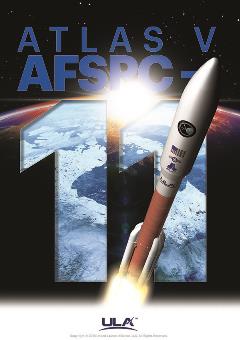 |
|
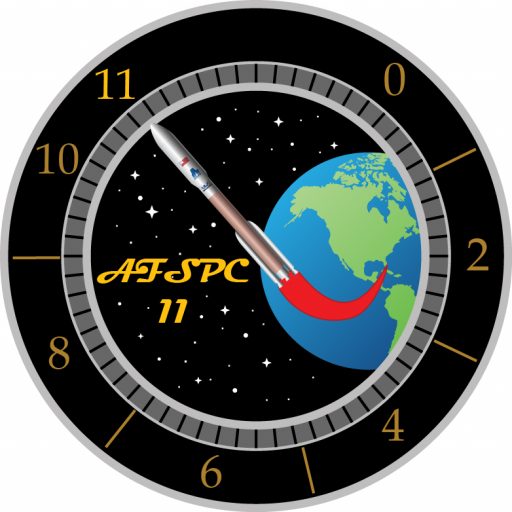
Launch coverage: (Live launch coverage will begin at 6:53 p.m. EDT)
Payload:
Air Force Space Command (AFSPC)-11, is a multi-manifested mission. The forward spacecraft is referred to as CBAS (Continuous
Broadcast Augmenting SATCOM) and the aft spacecraft is EAGLE (ESPA Augmented GEO Laboratory Experiment).
Managed by the Military Satellite Communications Directorate of the U.S. Air Force’s Space, and Missile Systems Center, the Continuous Broadcast Augmenting SATCOM (CBAS) satellite is a military satellite communications spacecraft destined for geosynchronous orbit to provide communication relay capabilities to support our senior leaders and combatant commanders. The mission of CBAS is to augment existing military satellite communications capabilities and broadcast military data continuously through space-based, satellite communications relay links.
(Not much is known about CBAS.)
EAGLE
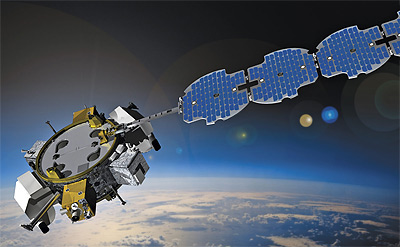
EAGLE is an Air Force Research Laboratory (AFRL) flight experiment program through the Integrated Experiments and Evaluation Division (RVE) of the AFRL Space Vehicles Directorate (AFRL/RV). The EAGLE spacecraft consists of an ESPA-based bus referred to as the EAGLE platform and a suite of payload experiments. Primary mission objective for the EAGLE platform is to demonstrate a maneuverable ESPA based space vehicle design which can accommodate up to six hosted or deployable payloads in GEO, and can be cost effectively replicated for multiple payload missions to either a GEO, LEO,
or GTO orbit. EAGLE experiments will demon- strate enhanced capabilities in space system anomaly resolution and the capability to supple- ment ground based space situational awareness assets from a geosynchronous platform. EAGLE experiments will also provide new technologies to detect and identify system anomalies such as space weather events and characterize collision
events due to micrometeorites.
AFRL ordered the Eagle-bus from Orbital in 2012. It consists of a ESPA adapter fitted with a propulsion module and Moog Broad Reach avionics, software and GPS receiver.
EAGLE will host at least five STP-sponsored payloads. It can support payloads up to a weight of 1086 kg for a mission of at least one year.
Following payloads are manifested on EAGLE:
{colsp=2}
Type / Application:|
Operator:|
Contractors:|
Equipment:|
Configuration:|
Power:|
Lifetime:|
Orbit:|
Launch Vehicle:
The Atlas V 551 Launch Vehicle is a part of the flight proven Atlas V 400/500 family that is being operated by United Launch Alliance. Atlas V rockets are flown since 2002 and have a near-perfect success rate (one flight was a partial failure, however the mission was catalogued as a success).
Atlas V 551 is the largest of the Atlas V Launcher Family flown to date featuring five Solid Rocket Boosters and a 5.4-meter Payload Fairing. The 551 configuration has two stages, a Common Core Booster and a Centaur Upper Stage. Centaur can make multiple burns to deliver payloads to a variety of orbits including Low Earth Orbit, Geostationary Transfer Orbit and Geostationary Orbit as well as Earth Escape Trajectories.
 |
|
 |
|
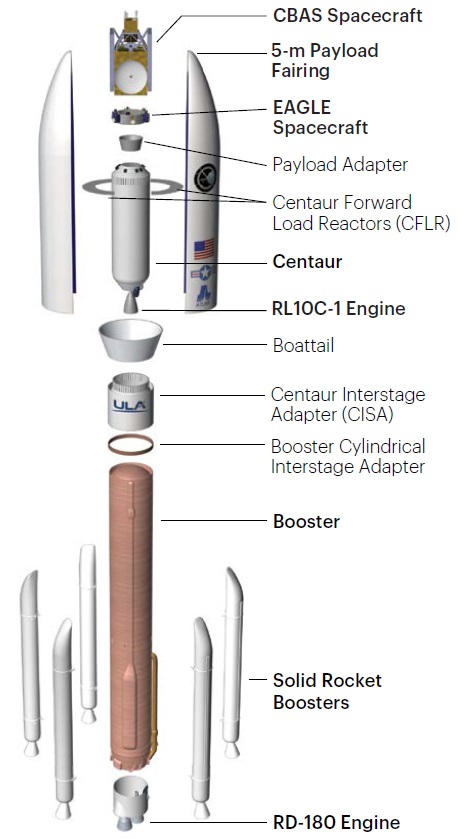
Notable Payloads launched by the 551 version include NASA’s New Horizons (2006) and Juno Spacecraft (2011) as well as the US Navy’s MUOS Satellite Fleet.
Every Atlas V version has a three digit ID-Number:
First Digit: Payload Fairing diameter: 4XX – 4m Diameter; 5XX – 5.4m Diameter
Second Digit: Number of Solid Rocket Boosters (0-5)
Third Digit: Number of RL-10A Engines on Centaur (1 or 2)
Atlas V 551 Specifications
{colsp=2}
Height:|
Diameter:|
Launch Mass:|
Stage 1:|
Boosters:|
Span:|
Stage 2:|
Mass to LEO:|
Mass to SSO:|
Mass to GTO:|
Mass to GEO:|
Atlas V 551 stands 62.2 meters tall and has a main diameter of 3.81 meters. With a liftoff mass of 587,000 Kilograms, it is the heavy-weight of the SEC (Single Engine Centaur) Atlas V Fleet as the 551 version features five Solid Rocket Boosters.
The Launcher uses the conventional Atlas V design with a Common Core Booster and a Centaur Upper Stage on top of it.
Atlas V 551 features a 5.4-meter payload Fairing under which it can carry payloads of up to 18,500 Kilograms to Low Earth Orbit.
Geostationary Transfer Orbit Capability is 8,700 Kilograms. Direct GEO Injections of Payloads up to 3,960kg are also possible.
Flight Sequence/Launch Profile:
{colsp=2}
T-0|Booster Ignition Command
T+0:00:01.1|Liftoff
T+0:00:02.1|Full Thrust Level
T+0:00:03.9|Pitch/Yaw Maneuver Initiation
T+0:00:34.4|Mach 1
T+0:00:45.9|Maximum Dynamic Pressure
T+0:01:35|Solid Rocket Booster Burnout
T+0:01:47.0|Booster 1 & 2 Separation
T+0:01:48.5|
T+0:03:31.0|
T+0:04:33.5|Main Engine Cutoff
T+0:04:39.5|Atlas/Centaur Separation
T+0:04:49.5|Centaur Ignition 1 - Burn Duration: 6:01.5
T+0:10:50.7|Centaur Cutoff 1 - Low Earth Orbit
T+0:10:50.7|Coast Phase - Duration: 12:06.7
T+0:22:57.4|Centaur Ignition 2 - Burn Duration: 5:48:9
T+0:28:46.3|Centaur Cutoff 2 - Elliptical Transfer Orbit
T+0:28:46.3|Coast Phase - Duration: 5:05:59.9
T+5:34:46.2|Centaur Ignition 3 - Burn Duration: 2:36.2
T+5:37:22.4|Centaur Cutoff 3 - GEO Drift Orbit
T+5:37:22.4|Spacecraft Separation Window Open
T+6:57:24.3|Spacecraft Separation Window Close
T+6:57:24.4|End of Mission
{colsp=2}
Launch Window|23:13-00:11 UTC
Launch Site|SLC-41, Cape Canaveral
Launch Vehicle|Atlas V 551
Launch Azimuth|89.9°
Ascent Duration|6 Hours and 57 Minutes
{colsp=2}
Altitude|39,000 km*
Inclination|0.00°
Eccentricity|0.00
{colsp=2}*ULA Mission Booklet states a semi major axis of 24,498.1 nmi, potentially a typo for 22,498 nmi, corresponding to a more reasonable drift orbit 35,295 km in altitude
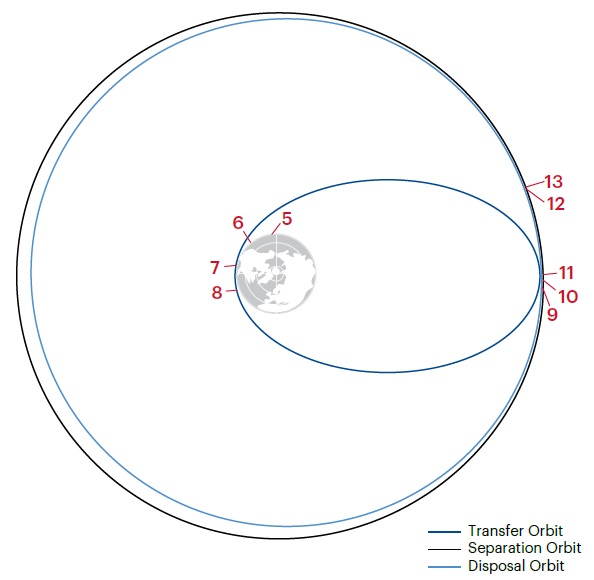
Ground Track Map
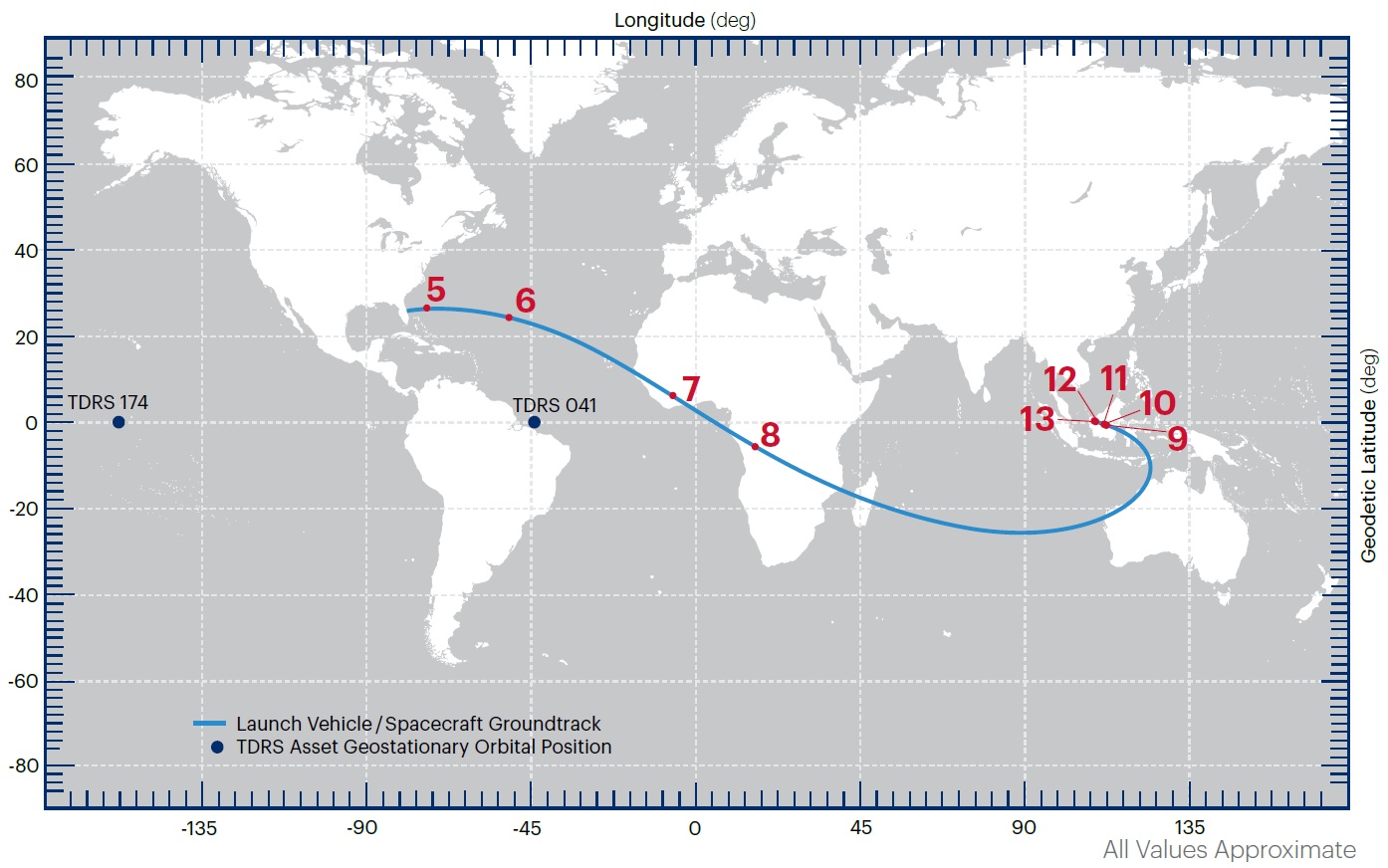
AV-079 AFSPC-11 L-1 Weather Forecast:
Launch day overall probability of violating weather constraints: 20%
Primary concern(s): Cumulus Clouds
24-hour delay overall probability of violating weather constraints: 80%
Primary concern(s): Lightning, Cumulus Clouds, Ground Winds
Latest weather updates are available here.
Links:
- Rocket: Atlas V 551
- Mission: AFSPC-11
- Launch Date: Saturday, April 14, 2018
- Launch Time: 7:13 p.m. EDT
- Launch Broadcast: Live launch coverage will begin at 6:53 p.m. EDT
- Launch Location: Space Launch Complex-41, Cape Canaveral Air Force Station
Mission Description: Air Force Space Command (AFSPC)-11 is a multi-manifested mission. The forward spacecraft is referred to as CBAS (Continuous Broadcast Augmenting SATCOM) and the aft spacecraft is EAGLE (ESPA Augmented GEO Laboratory Experiment).
Launch Notes: AFSPC-11 will mark the 77th launch of the Atlas V rocket since its inaugural launch in 2002 and the eighth in the 551 configuration, which produces more than 2.5 million pounds of thrust off the launch pad. This mission will be ULA’s 127th since the company was founded in December 2006.
 |
|
Launch date:
|
April 14, 2018
Launch Window Opens:
|
1913 ET/2313 UTC
Launch Window Closes:
|
2111 ET/0111 UTC
Launch site:
|SLC-41 Cape Canaveral Air Force Station, Florida
{colsp=2}
[highlight]L[eventtimer]2018-04-14 23:13:00;%c%%ddd%/%hh%:%mm%:%ss%[/eventtimer][/highlight]
Mission Patch


Launch coverage: (Live launch coverage will begin at 6:53 p.m. EDT)
Payload:
Air Force Space Command (AFSPC)-11, is a multi-manifested mission. The forward spacecraft is referred to as CBAS (Continuous
Broadcast Augmenting SATCOM) and the aft spacecraft is EAGLE (ESPA Augmented GEO Laboratory Experiment).
Managed by the Military Satellite Communications Directorate of the U.S. Air Force’s Space, and Missile Systems Center, the Continuous Broadcast Augmenting SATCOM (CBAS) satellite is a military satellite communications spacecraft destined for geosynchronous orbit to provide communication relay capabilities to support our senior leaders and combatant commanders. The mission of CBAS is to augment existing military satellite communications capabilities and broadcast military data continuously through space-based, satellite communications relay links.
(Not much is known about CBAS.)
EAGLE

EAGLE is an Air Force Research Laboratory (AFRL) flight experiment program through the Integrated Experiments and Evaluation Division (RVE) of the AFRL Space Vehicles Directorate (AFRL/RV). The EAGLE spacecraft consists of an ESPA-based bus referred to as the EAGLE platform and a suite of payload experiments. Primary mission objective for the EAGLE platform is to demonstrate a maneuverable ESPA based space vehicle design which can accommodate up to six hosted or deployable payloads in GEO, and can be cost effectively replicated for multiple payload missions to either a GEO, LEO,
or GTO orbit. EAGLE experiments will demon- strate enhanced capabilities in space system anomaly resolution and the capability to supple- ment ground based space situational awareness assets from a geosynchronous platform. EAGLE experiments will also provide new technologies to detect and identify system anomalies such as space weather events and characterize collision
events due to micrometeorites.
AFRL ordered the Eagle-bus from Orbital in 2012. It consists of a ESPA adapter fitted with a propulsion module and Moog Broad Reach avionics, software and GPS receiver.
EAGLE will host at least five STP-sponsored payloads. It can support payloads up to a weight of 1086 kg for a mission of at least one year.
Following payloads are manifested on EAGLE:
- HTI-SpX (Hypertemporal Imaging Space Experiment) provided by Air Force Research Laboratory Space Vehicles Directorate (AFRL/RV) is to help to improve the understanding of hypertemporal imaging, which involves blending images taken of different spots on the Earth in several different spectral wavelengths at regular intervals over time.
- MYCROFT (deployable)
- CEASE-III-RR (Compact Environmental Anomaly Sensor III Risk Reduction) payload
- ISAL (Inverse Synthetic Aperture Ladar) to provide high resolution images which are not limited in resolution by the diffraction limit of the telescope collecting the imaging data. This makes it an ideal method for imaging Geosynchronous Earth Orbit (GEO) space objects
- ARMOR (AFRL - 1201 Resilient Spacecraft Bus Development Experiment)
Specifications
Type / Application:|
- Technology
Operator:|
- Air Force Research Laboratory (AFRL)
Contractors:|
- Orbital Sciences Corporation (OSC) → Orbital ATK
Equipment:|
- HTI-SpX
- MYCROFT
- CEASE-III-RR
- ISAL
- ARMOR
Configuration:|
- Eagle-Bus ESPA (ESPAStar)
Power:|
- Deployable solar arrays
- Batteries
Lifetime:|
- 1 year
Orbit:|
- Target Orbit: Geostationary orbit
- AFSPC-11 at S/C separation:
- Flight Azimuth: 89.9 deg
- Semi-major Axis: 24,498.1 nmi
- Inclination: 0.00 deg
- Eccentricity 0.00 n.d.
Launch Vehicle:
The Atlas V 551 Launch Vehicle is a part of the flight proven Atlas V 400/500 family that is being operated by United Launch Alliance. Atlas V rockets are flown since 2002 and have a near-perfect success rate (one flight was a partial failure, however the mission was catalogued as a success).
Atlas V 551 is the largest of the Atlas V Launcher Family flown to date featuring five Solid Rocket Boosters and a 5.4-meter Payload Fairing. The 551 configuration has two stages, a Common Core Booster and a Centaur Upper Stage. Centaur can make multiple burns to deliver payloads to a variety of orbits including Low Earth Orbit, Geostationary Transfer Orbit and Geostationary Orbit as well as Earth Escape Trajectories.



Notable Payloads launched by the 551 version include NASA’s New Horizons (2006) and Juno Spacecraft (2011) as well as the US Navy’s MUOS Satellite Fleet.
Every Atlas V version has a three digit ID-Number:
First Digit: Payload Fairing diameter: 4XX – 4m Diameter; 5XX – 5.4m Diameter
Second Digit: Number of Solid Rocket Boosters (0-5)
Third Digit: Number of RL-10A Engines on Centaur (1 or 2)
Atlas V 551 Specifications
Specifications
Height:|
- 62.2m
Diameter:|
- 3.81m
Launch Mass:|
- 587,000kg
Stage 1:|
- Atlas Common Core Booster
Boosters:|
- 5
Span:|
- 6.9m
Stage 2:|
- Centaur
Mass to LEO:|
- 18,500 kg
Mass to SSO:|
- 13,500 kg
Mass to GTO:|
- 8,700 kg
Mass to GEO:|
- 3,960 kg
Atlas V 551 stands 62.2 meters tall and has a main diameter of 3.81 meters. With a liftoff mass of 587,000 Kilograms, it is the heavy-weight of the SEC (Single Engine Centaur) Atlas V Fleet as the 551 version features five Solid Rocket Boosters.
The Launcher uses the conventional Atlas V design with a Common Core Booster and a Centaur Upper Stage on top of it.
Atlas V 551 features a 5.4-meter payload Fairing under which it can carry payloads of up to 18,500 Kilograms to Low Earth Orbit.
Geostationary Transfer Orbit Capability is 8,700 Kilograms. Direct GEO Injections of Payloads up to 3,960kg are also possible.
Flight Sequence/Launch Profile:
Flight Sequence
T-0:00:02.7|Stage 1 - RD-180 IgnitionT-0|Booster Ignition Command
T+0:00:01.1|Liftoff
T+0:00:02.1|Full Thrust Level
T+0:00:03.9|Pitch/Yaw Maneuver Initiation
T+0:00:34.4|Mach 1
T+0:00:45.9|Maximum Dynamic Pressure
T+0:01:35|Solid Rocket Booster Burnout
T+0:01:47.0|Booster 1 & 2 Separation
T+0:01:48.5|
- Booster 3, 4 & 5 Separation
- RL-10C Boost Phase Cool-Down
- Centaur RCS Pyro Valve Initiation
T+0:03:31.0|
- Payload Fairing Jettison
- Stage 1 Throttle down for MECO
T+0:04:33.5|Main Engine Cutoff
T+0:04:39.5|Atlas/Centaur Separation
T+0:04:49.5|Centaur Ignition 1 - Burn Duration: 6:01.5
T+0:10:50.7|Centaur Cutoff 1 - Low Earth Orbit
T+0:10:50.7|Coast Phase - Duration: 12:06.7
T+0:22:57.4|Centaur Ignition 2 - Burn Duration: 5:48:9
T+0:28:46.3|Centaur Cutoff 2 - Elliptical Transfer Orbit
T+0:28:46.3|Coast Phase - Duration: 5:05:59.9
T+5:34:46.2|Centaur Ignition 3 - Burn Duration: 2:36.2
T+5:37:22.4|Centaur Cutoff 3 - GEO Drift Orbit
T+5:37:22.4|Spacecraft Separation Window Open
T+6:57:24.3|Spacecraft Separation Window Close
T+6:57:24.4|End of Mission
Launch Data
Launch Date|April 14, 2018Launch Window|23:13-00:11 UTC
Launch Site|SLC-41, Cape Canaveral
Launch Vehicle|Atlas V 551
Launch Azimuth|89.9°
Ascent Duration|6 Hours and 57 Minutes
Target Orbit
Type|Geostationary Drift OrbitAltitude|39,000 km*
Inclination|0.00°
Eccentricity|0.00
{colsp=2}*ULA Mission Booklet states a semi major axis of 24,498.1 nmi, potentially a typo for 22,498 nmi, corresponding to a more reasonable drift orbit 35,295 km in altitude

Ground Track Map

AV-079 AFSPC-11 L-1 Weather Forecast:
Time
|
Temps
|
Humidity
|
Pressure
|
Solar Activity
|
Surface Visibility
|
Wind
|
Weather
During Launch Window
|
During Launch Window
76- 77 °F
|
80%
|
30.01 INS
|
Low
|
7 miles
|
140° @ 20-25 KT (230’)
|
Isolated showers
Launch day overall probability of violating weather constraints: 20%
Primary concern(s): Cumulus Clouds
24-hour delay overall probability of violating weather constraints: 80%
Primary concern(s): Lightning, Cumulus Clouds, Ground Winds
Latest weather updates are available here.
Go Atlas! Go Centaur! Go AFSPC-11!
Links:
